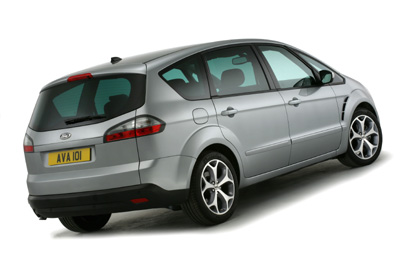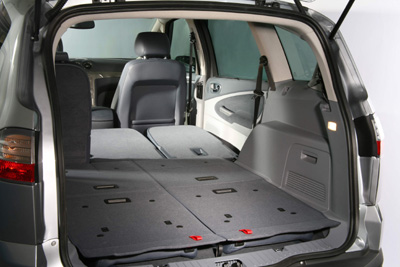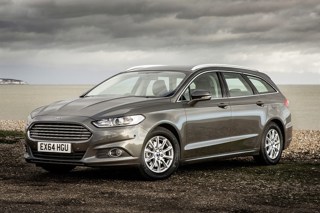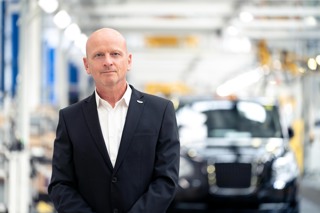Review
But not all young parents are ready to give up excitement. This is something volume car manufacturers are starting to appreciate. While Vauxhall has dangled hot turbocharged versions of its Zafira under customers’ noses for several years, Ford has now taken the lead as the first volume brand to launch a completely new model range that specifically targets these drivers – the S-Max.
Its engineers have taken the convenience and seven-seat capacity of the new Galaxy and wrapped it in a far sexier bodyshell, perched it on a sportier suspension and added some very good engines. As simple as it sounds, it really works –the S-Max is a great product.
Kevin O’Neill, Ford of Europe’s vehicle line director for large and luxury vehicles, says: “S-Max is a step up for people who start a family but don’t want to give up all of their freedom. It suits people who strive to have the best of both worlds: they want to have large car capacity and a true driver’s car.”

Ford wants the S-Max to tempt young, expanding families from their premium small estate cars, such as the Audi A4 Avant. Certainly S-Max’s styling will help, as its sporty front end, pronounced wheel-arches and side vents, and lower rear roofline give it a far more dynamic presence than traditional MPVs.
A new FoldFlatSystem (FFS) allows the car to be configured to seat up to seven occupants in three rows, and each individual seat can be folded easily and quickly, creating a flat floor for stowage.
Front and middle-row seats slide forward and back for extra legroom, and the middle row reclines like an aircraft seat for comfort.
#AM_ART_SPLIT# However, the rear row of two seats is fixed so passengers need to negotiate with the middle row’s occupants for extra legspace. Rear headroom isn’t a problem, though, even for average height adults, despite the raking roofline.
Boot space is restricted to a couple of overnight bags if all seven seats are occupied, but there are 26 stowage spaces dotted around the cabin. Fold the rear row and luggage capacity increases from 285 litres to 854 litres. With both rear rows folded, maximum capacity becomes 2,000 litres if loaded to the roof.
Sales staff should encourage buyers to specify the activity kit from the S-Max’s options list. This fixes aluminium bars and brackets to the seat backs which, when the seats are folded, will secure cycles, snowboards and other large objects – perfect for the active family.
Ford recognizes that many S-Max buyers, although desiring sporty looks and a decent drive, will still demand reasonable economy, so its two diesel offerings will be the biggest sellers: a 1.8-litre TDCi with 123bhp and a 2.0-litre TDCi with 138bhp. Two petrol engines will also be available: a 2.0-litre with 143bhp and, for the petrol-head parent, the Focus ST’s 2.5-litre turbo with 216bhp.
Trim levels will follow Ford’s usual range of LX, Zetec and Titanium, plus an optional Titanium X-pack upgrade. Equipment levels are very good generally; the entry-level LX has air-con but it doesn’t get alloy wheels.
S-Max and Galaxy are launch models for Ford’s new Human Machine Interface (HMI), which uses toggle switches on the steering wheel and has a mobile phone menu system as its biggest influence.
Ford expects to sell 9,000 S-Max models per year. It is launching the car on June 3, simultaneously with new Galaxy, priced from £16,995 for the 2.0-litre LX to £21,995 for the 2.5-litre Titanium.

Behind the wheel
Ford is so keen to emphasize the sporty nature of S-Max that the range-topping 2.5-litre turbo model was the only variant on offer at the press launch. Yet this engine will account for only 5% of S-Max sales – the 2.0-litre TDCi will be the most popular version.
The 2.5-litre is a cracker, although understandably thirsty. Despite the S-Max’s 1622kg bulk, it makes driving a thrilling experience. It’ll cruise all day at well above the legal speed limit and 0-62mph takes 7.9 seconds. S-Max has a directness through the steering that MPVs generally lack.
For spirited drivers, there is an Interactive Vehicle Dynamics Control option.
Designers, wanting a “cockpit” experience, created a centre console swooping down from the dashboard.
| Model: | 2.0 | 1.8 TDCi | 2.0 TDCi | 2.5 | ||||
| Max power (bhp): | 143/6,000 | 123/3,850 | 138/4,000 | 216/5,000 | ||||
| Max torque (lb-ft/rpm): | 140/4,500 | 236/1,750 | 236/1,750 | 236/1,500-4,800 | ||||
| Max speed (mph): | 122 | 116 | 122 | 143 | ||||
| 0-62 (mph): | 10.9 | 11.6 | 10.2 | 7.9 | ||||
| Fuel economy (mpg): | 34.8 | 45.5 | 44.1 | 30 | ||||
| CO2 emissions | 194 | 164 | 169 | 224 | ||||
| On sale: | June 3 | |||||||
| Prices (OTR): | £16,995-£21,995 | |||||||

Factsheet
No information available.
















